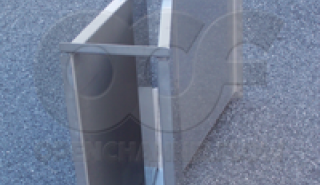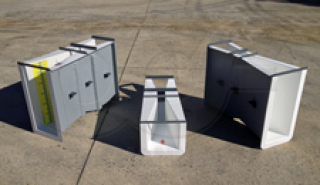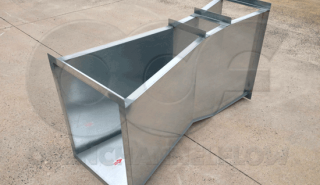One of the things to look at when selecting a material for your Parshall flume is how long the flume will actually last. A flume's lifespan can be as important as it's cost if a poor material selection results in a short useful life.
Stainless Steel Parshall Flumes
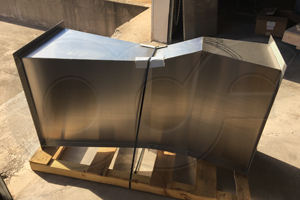 Of the various materials available, stainless steel has longest lifespan when exposed to normal flow steaks. Here the lifespan could be considered to be indefinite.
Of the various materials available, stainless steel has longest lifespan when exposed to normal flow steaks. Here the lifespan could be considered to be indefinite.
Unfortunately, normal flows aren't usually the types of flows where stainless steel is used. Stainless steel is more commonly used in abusive or corrosive applications. As a result, the lifespan of a stainless steel flume is inversely proportional to how abusive or corrosive the environment is. The more abuse / corrosion, the shorter the lifespan.
Fiberglass Parshall Flumes
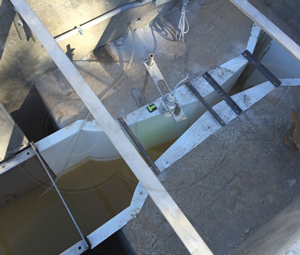 While not usually as long as stainless steel, the lifespan of a fiberglass Parshall flume is good - generally 15-20 years. Again, the lifespan depends upon how abusive the environment is.
While not usually as long as stainless steel, the lifespan of a fiberglass Parshall flume is good - generally 15-20 years. Again, the lifespan depends upon how abusive the environment is.
If there are high levels of suspended grit or stony debris, the gel coat can be worn away. Once that happens, the underlying fiberglass laminate is exposed.
This laminate no longer has the UV protection that gel coat provides and sunlight will gradually breakdown the resin over time. The breakdown of the resin means the flume will lose strength.
Additionally, once the gel coat is gone and bare resin is exposed, water migration into the laminate will dramatically increase. One concern with water absorption is the expansion / contraction of the water during freeze / thaw periods which speeds the breakdown of the laminate.
Corrosion is usually not a problem with fiberglass. The polyester resins usually used to make flumes are suitable for a wide range of chemicals at atmospheric temperatures.
Galvanized Steel Parshall Flumes
Galvanized steel is a cost effective material with a good useful lifespan and is most frequently used for Parshsall flumes in irrigation / water rights applications.
The corrosion of zinc - the protecting factor of galvanization - in freshwater is a complex process driven mostly by impurities in the water.
Relatively small differences in water content or conditions can produce different changes in the amount and rate of corrosion. As a result, there is no simple rule governing the corrosion rate of zinc in freshwater. Overall, hard water is much less corrosive than soft water – so the useful lifespan can vary widely between similar applications.
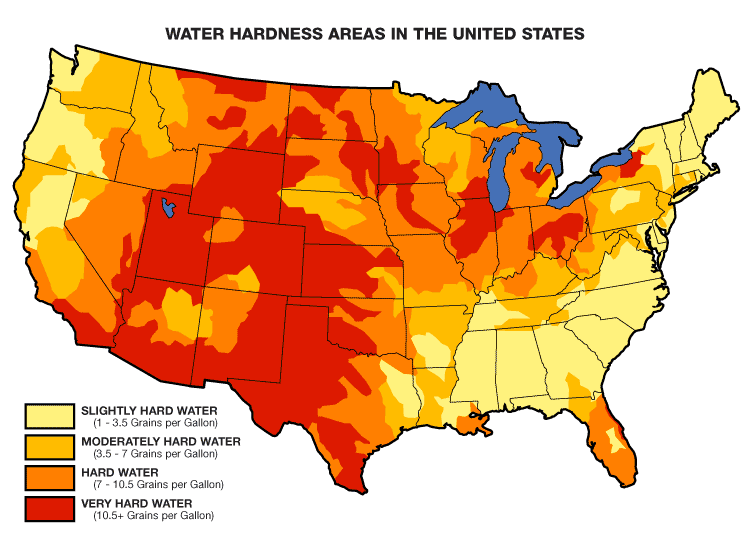
The biggest factors in the zinc corrosion rate in freshwater are dissolved gasses, hardness/mineral rate, flow rate, and other ions/chlorides.
- Gasses: More oxygen means more corrosion products on the surface of the zinc which increases the corrosion rate. For this reason, fully immersed in the water is better than partial immersion because there is less oxygen under water. Well waters tend to have lower content of dissolved oxygens, so corrosion is low, while surface waters and springs have higher rates. The normal waterline and the discharge section in a galvanized Parshall flume will see some of the greatest corrosion.
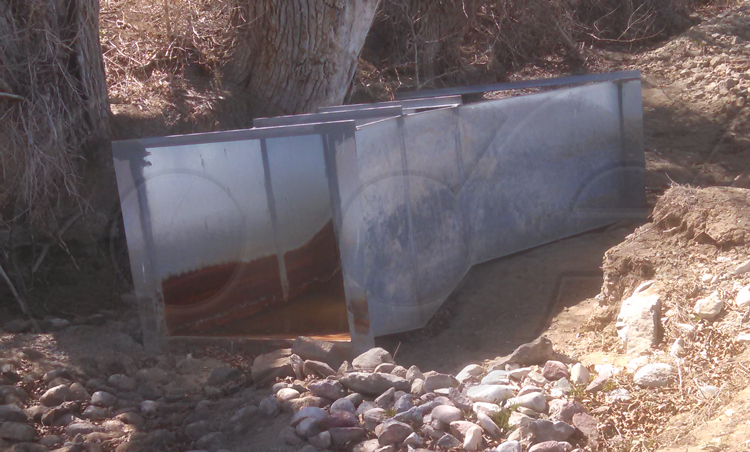
- Hardness: In hard water, zinc combines with carbonates and bio carbonates to form zinc carbonate, which unlike zinc oxide, is not water soluble. The zinc carbonate deposits on the surface of the zinc and creates a passive film on the galvanized part slowing corrosion. The softer the water, the lower it is in carbonate; therefore, soft water is more corrosive than hard.
- Flow Rate: Flumes measuring higher flow rates tend to have increased corrosion as the friction of the water increases abrasion of the flume's wetted surfaces.
- Other Ions: Choloride is the most aggressive ion to zinc. This tends to be more pronounced in soft waters than hard waters. The protective film deposited by carbonate in hard water protects the zinc coating from anion attack.
To extend the life of galvanized flumes, they should be periodically inspected. If corrosion is found it should be immediately cleaned off and cold galvanization applied. Keep in mind that cold galvanization does not typically last as long as hot dipped galvanization – so treated areas will most likely need periodic retreatment.
Image: H2O Distributors
Source: American Galvanizers Association


